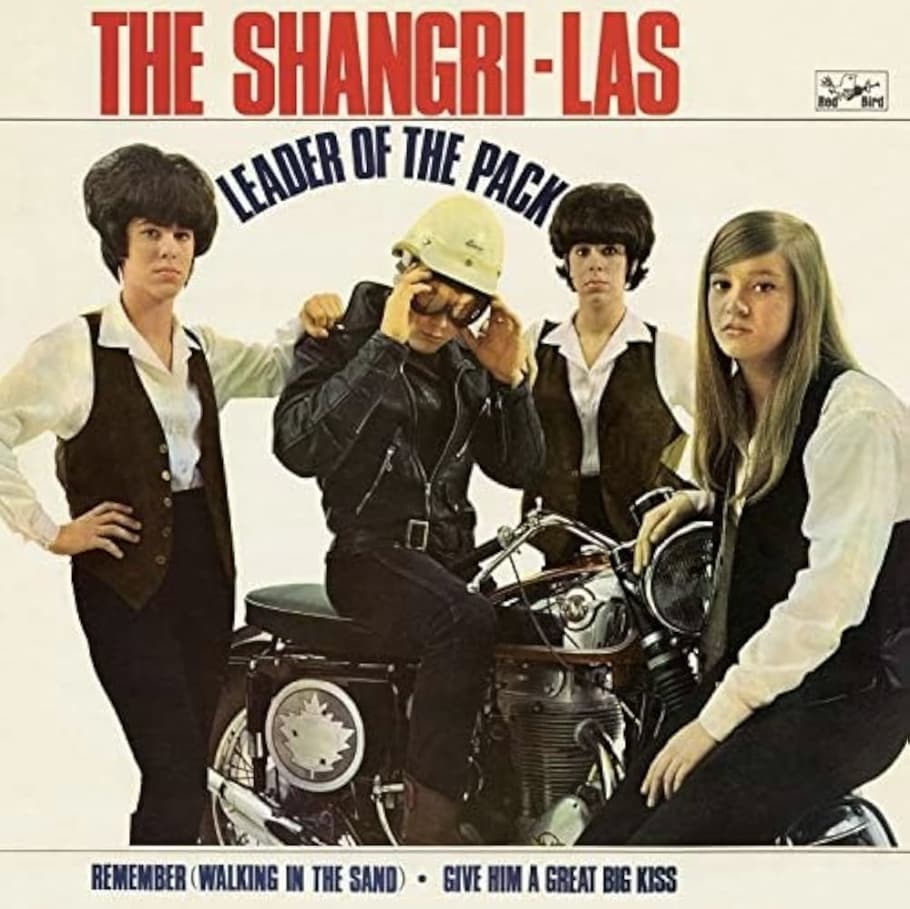
The Shangri-Las – “Leader of the Pack”: A Dramatic Tale of Love, Rebellion, and Tragedy
The Shangri-Las’ “Leader of the Pack” is a quintessential 1960s teen tragedy song that tells the story of young love, defiance, and heartbreak. Released in 1964, the song quickly climbed to No. 1 on the Billboard Hot 100 and has since become an iconic piece of pop culture, remembered for its gripping narrative and theatrical style. Written by George “Shadow” Morton, Jeff Barry, and Ellie Greenwich, “Leader of the Pack” blends rock, pop, and drama, making it one of the most memorable girl-group hits of the decade.
The song opens with the sound of a motorcycle revving up, immediately setting a rebellious tone and creating an atmosphere that captures the intensity of young love. The beat is steady and pulsing, almost like a heartbeat, drawing listeners into the story. The instrumentation is simple but effective, with a guitar-driven rock sound that conveys a sense of urgency and excitement. The song’s production is sleek and atmospheric, giving it a cinematic quality that perfectly suits the storyline.
Lyrically, “Leader of the Pack” tells the tragic story of a teenage girl who falls in lov with a “bad boy” named Jimmy, the leader of a motorcycle gang. The song’s narrator, voiced by lead singer Mary Weiss, describes her parents’ disapproval of Jimmy, leading to the heartbreaking moment when she is forced to break up with him. Lines like “He’s my guy, but he’s bad” and “They told me he was bad, but I knew he was sad” reveal the internal conflict of being drawn to someone who’s considered dangerous but feeling a deeper connection.
The song’s chorus, “He’s the leader of the pack,” is delivered with a mix of admiration and sorrow, highlighting both the allure and the inevitable tragedy of falling for a rebellious figure. The phrase “leader of the pack” becomes a defining label for Jimmy, encapsulating the thrill and risk that come with his world. This chorus, with its layered harmonies and dramatic emphasis, amplifies the song’s emotional tension and makes it easy for listeners to sing along, even as they feel the impending sadness.
One of the most memorable moments in “Leader of the Pack” is the spoken-word section, where the narrator describes the breakup: “Look out! Look out! Look out!” This part heightens the drama and puts listeners directly in the middle of the action. Weiss’s spoken delivery is full of anguish and regret, adding a layer of vulnerability to the song that makes it feel authentic and relatable. Her voice captures the innocence and turmoil of teenage love, making the listener feel the pain of the decision to walk away.
The song culminates in a tragic twist as Jimmy, heartbroken, speeds away on his motorcycle, only to meet a fatal accident. The revving of the motorcycle, followed by the crash, serves as the emotional climax, symbolizing the finality of their love and the dangers that come with living life on the edge. The lyrics, “I’ll never forget him, the leader of the pack,” capture the deep impact of this loss, turning the song from a love story into a tale of loss and remembrance.
Musically, “Leader of the Pack” exemplifies the dramatic storytelling style that was popular in the girl-group genre of the early 1960s. The Shangri-Las’ harmonies, with their layered and emotive sound, create a sense of unity and empathy, as if they’re collectively mourning the loss of a love that could never be. The production, with its theatrical sound effects and echoing vocals, enhances the song’s emotional weight, making it feel like a mini-drama. This blending of music and storytelling has helped the song maintain its place in music history as a groundbreaking piece of pop theater.
Since its release, “Leader of the Pack” has been covered by various artists and featured in movies, TV shows, and commercials, cementing its status as a cultural icon. Its themes of forbidden love, teenage rebellion, and tragic loss have universal appeal, resonating with listeners who understand the bittersweet nature of young love. The song’s dramatic style and relatable storyline have made it a favorite among fans of classic pop, and its narrative structure has influenced countless artists who seek to tell stories through music.
Over the years, “Leader of the Pack” has continued to capture the imaginations of new generations, celebrated for its bold combination of music and storytelling. The song’s unique blend of rock, pop, and melodrama has made it a staple of the girl-group genre and a touchstone of 1960s music, showcasing the power of music to tell stories that resonate across time.
In the end, “Leader of the Pack” is more than just a song about teenage love—it’s a tragic, timeless tale of romance and heartbreak. The Shangri-Las’ emotional delivery, combined with the song’s vivid narrative and iconic production, make it a classic that continues to captivate listeners. For fans of dramatic storytelling and nostalgic pop, “Leader of the Pack” remains an unforgettable anthem of young love, rebellion, and the high cost of living on the edge.





